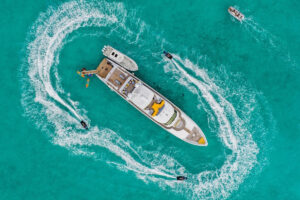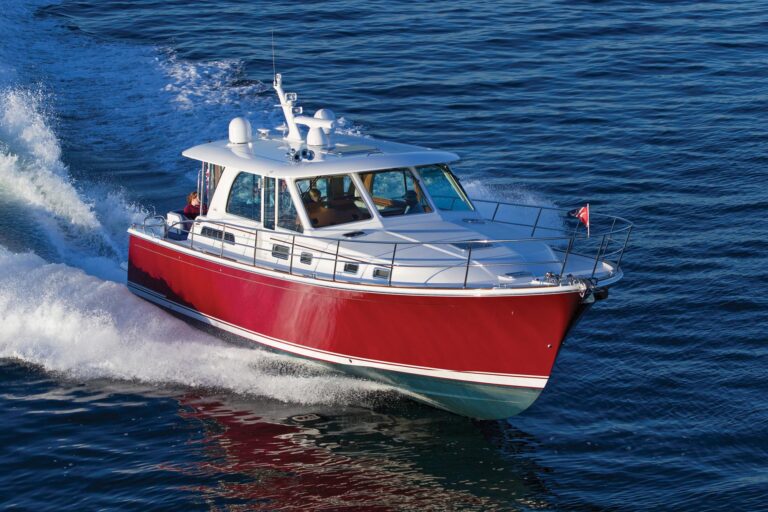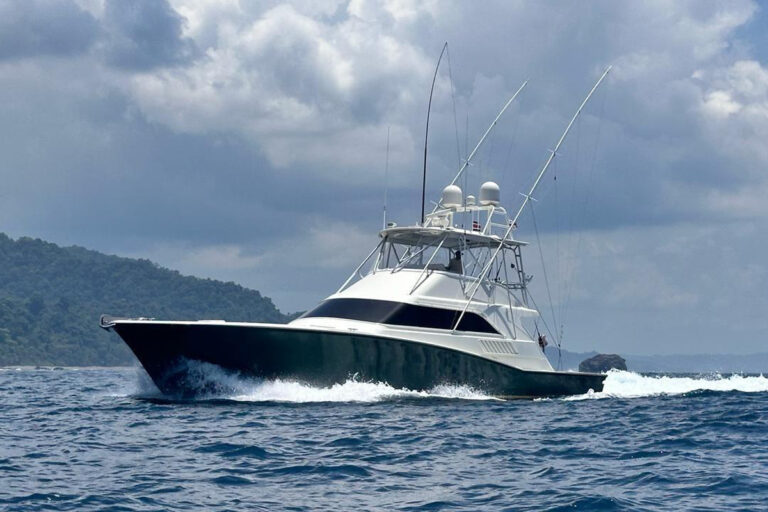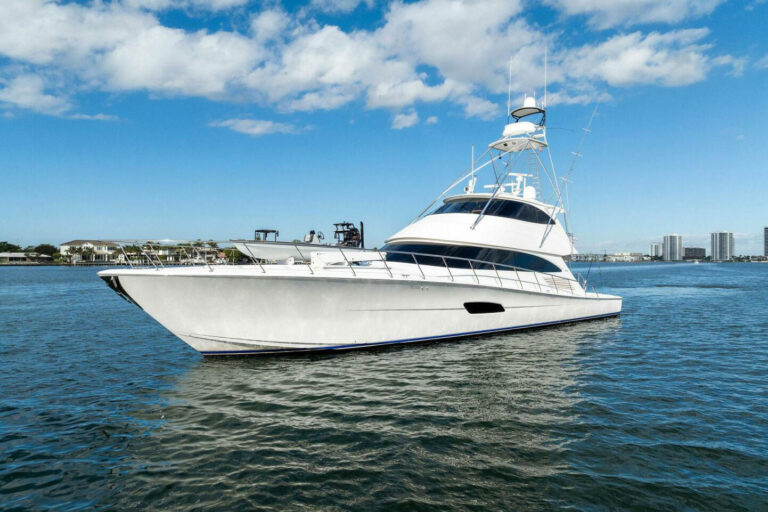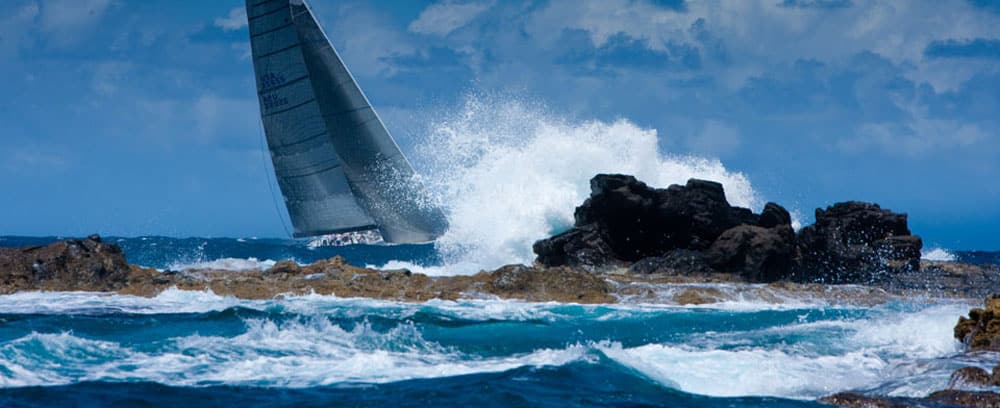
Les Voiles de St. Barths 2011 Nov
“Tacking in 3, 2, 1 — over she goes,” skipper Hugo Stenbeck called. We’d been sailing the 97-foot Genuine Risk under the single-reefed main alone and making about 15 knots in winds of 20 to 25 knots. The crew rolled out the headsail and trimmed to our course. The starting gun would fire in about 45 minutes, and Stenbeck planned to use the time to practice with his crew because they’d been together for only a short time. Even highly experienced sailors need time to learn a boat, to anticipate its behavior and that of her skipper. Ken Read, skipper of Rambler 100, confirmed the need to practice, saying that these maxis were designed for offshore racing, during which a yacht may sail on a single tack for most of a day. They weren’t designed for the slice and dice of racing around the buoys, so handling the headsails requires more planning and more work to get it right.
See the complete photo gallery here.
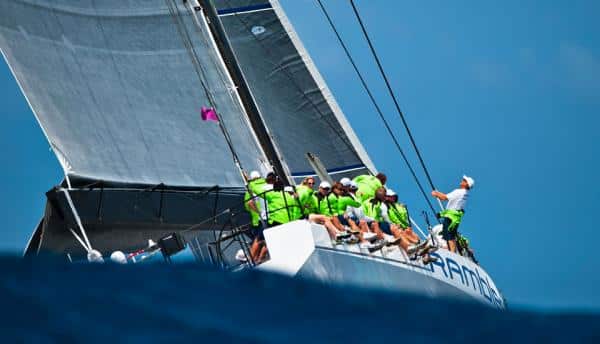
Photo: Kurt Arrigo
“Stand by to bear away,” Stenbeck called. Genuine Risk groaned like a dinosaur in a B horror film from the 1960s as the trimmers let their sheets slip on the drums. I sat on the afterdeck, hard against the safety rail, and felt a high-frequency vibration through the seat of my pants. That frightful growl reminded me of the massive loads these maxis place on the running and standing rigging. You don’t want to be in the path of a fitting that’s parted from its mount. What’s more, a flailing jib sheet all by itself can flog a crew member into the ER.
Earlier that Tuesday, 0700 to be exact, the race village in Gustavia, St. Barths, had opened for breakfast, and on the second floor of the complex, the race office simultaneously opened for registration. By 0730, the area buzzed like a hornet’s nest, as crew, skippers, journalists, photographers, officials and sponsors’ representatives sipped espresso and talked animatedly over croissants, cheeses and fresh fruit. Although most of the conversation was in French, I also heard English in a variety of accents, as well as German, Swedish and Italian.
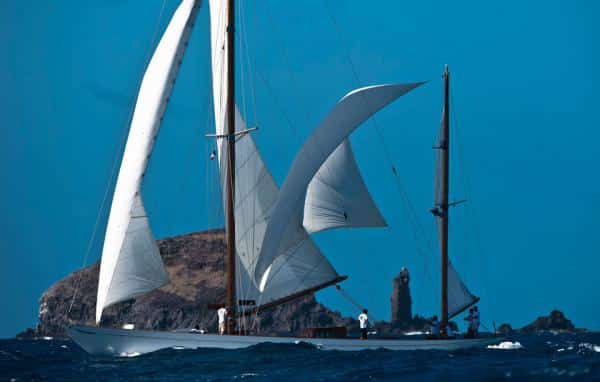
Photo: Kurt Arrigo
While most of the entrants, especially the smaller boats in the Racing/Cruising category, hail from the islands of the French West Indies, Les Voiles de St. Barths has more than doubled in size since its first running in 2010. That event attracted 23 entries. This year, 48 boats signed on, and the number of serious racing boats in the mix hinted at an even larger field in 2012.
The skippers’ briefing in the media/registration room overflowed capacity. The predominant language of the meeting was French, painting bewilderment on the faces of more than half the attendants. Someone, in a tone of complete frustration, requested a translation of each point in the briefing, and the officials graciously complied.
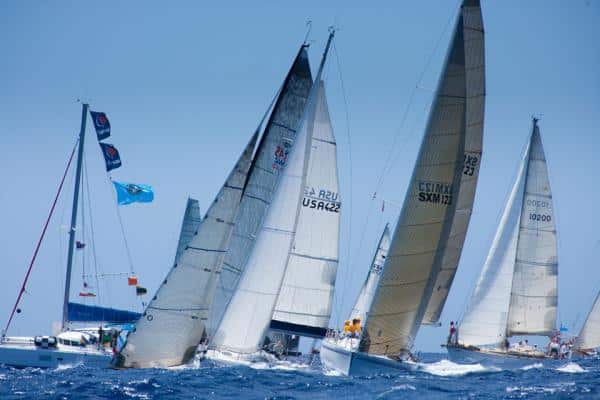
Photo: Christophe Jouany
Later that day toward the close of the race, Genuine Risk, sailing on a broad reach in 32 knots of true wind, surfed down a wave at 30 knots, completely under control as the crew cheered her onward. We crossed the line in second place, behind Rambler 100. Considering the differences in the design of these two yachts, second, even on corrected time, was less a position of first loser and more like a triumph.

